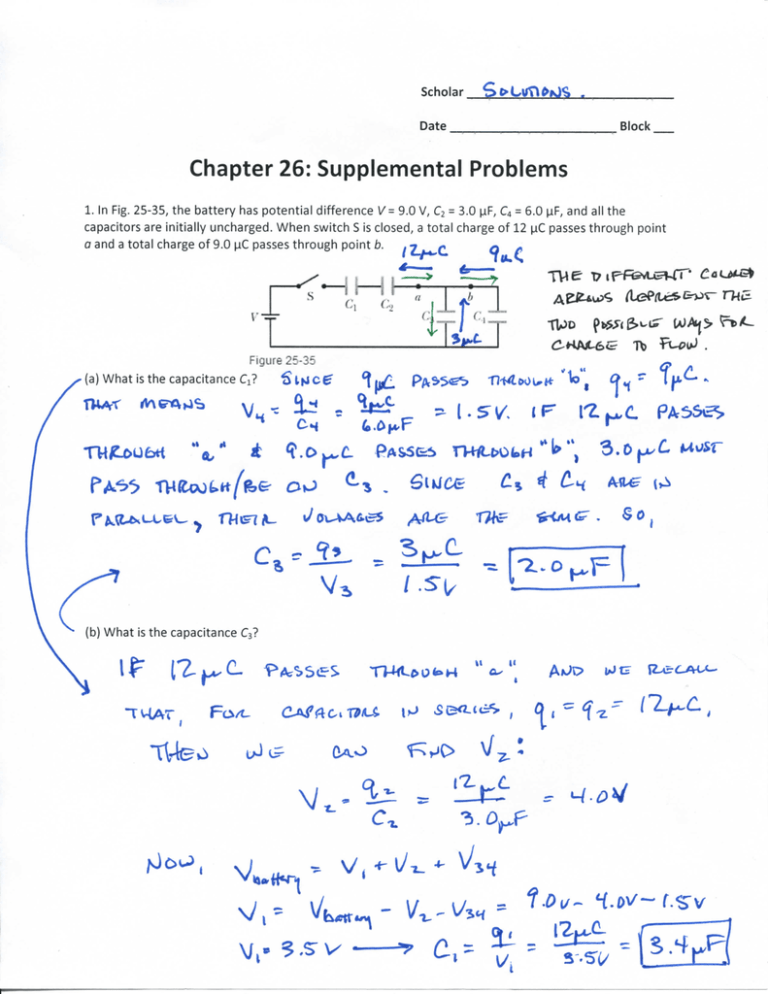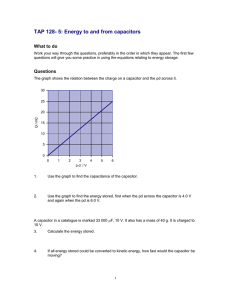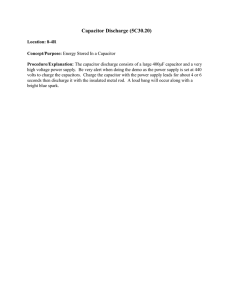V - Wssd.org
advertisement

Scholar Block Date Chapter 26: Supplemental Problems 1. In Fig. 25-35, the battery has potential difference V= 9.0 V, C2 = 3.0 \if, C4 = 6.0 |aF, and all the capacitors are initially uncharged. When switch S is closed, a total charge of 12 |aC passes through point o and a total charge of 9.0 |_iC passes through point b. fHH 1 Figure 2b-3o • (a) What is the capacitance CY? (b) What is the capacitance C3? V». \/,« V^ n - V^-V*,* V,« ? .5- v 2. In Fig. 25-28, a potential difference V = 100 V is applied across a capacitor arrangement with capacitances Ci - 10.0 uF, C2 = 6.00 |aF, and C3 = 15.0 uF. Find the following values. * *—I J_ Figure 25-28 (a) The charge on capacitor 3. ^ v (b) The potential difference across capacitor 3. (c) The stored energy for capacitor 3. Uu, • i (d) The charge on capacitor 1. A £ CS (e) The potential difference across capacitor 1. - 4^-41/ (f) The stored energy for capacitor 1. V * 0-0(00- (g) The charge on capacitor 2. - C i\J *?_ ~~ ((* <?O \J (h) The potential difference acrosscapacitor (i) The stored energy on capacitor 2. 3. In Fig. 25-41, how much charge is stored on the parallel plate capacitors by the 12.0 V battery? One is filled with air, and the other is filled with a dielectric for which K = 2.65; both have a plate area of 4.65 xlO"3 m2 and a plate separation of 2.00 mm. 1 Fiqure 25-41 V. feB A A &„A


